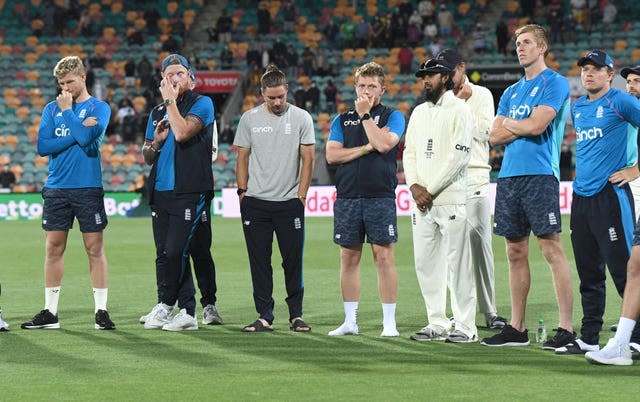What next for England after Ashes embarrassment?
England’s woeful Ashes campaign came to a humiliating conclusion as the latest in a long line of batting collapses condemned them to a crushing defeat in Hobart.
After losing the series 4-0 and barely competing along the way, the post mortem is only just beginning. Here the PA news agency looks at what went wrong and what can be done about it.
Just how bad was this series?

In terms of overall scoreline, a slim improvement on the 5-0 whitewashes suffered in 2006-07 and 2013-14 but anyone who stuck with those chastening campaigns all the way through will know they were more competitive than what has unfolded over the last few weeks. The margins of defeat here have been enormous and a clean sweep of thumping defeats would surely have been sealed were it not for rain breaks in Sydney. As former captain Sir Alastair Cook has already indicated, this is rock bottom.
Will Joe Root pay the price?

In the normal course of events the captain would be expected to jump or be pushed, and this is Joe Root’s third successive Ashes campaign without lifting the urn. But his position does not appear to be under immediate threat. He has already said he is eager to lead the rebuild and the only viable candidate to succeed him, Ben Stokes, does not appear to be circling. Not enough players are sure of their place and even fewer have proven leadership skills, while the county game is hardly teeming with options.
So where else could the axe fall?

Head coach Chris Silverwood is clearly vulnerable. He saw his role and responsibilities beefed up last year when he assumed the duties of sacked national selector Ed Smith. He admitted at the time that change put his neck on the line and his position now looks tenuous. But the man who appointed him and increased his power base, Ashley Giles, is hardly safe either. His time as managing director of men’s cricket at the ECB is reaching a crossroads and it is possible the entire role is an unnecessary layer of administration. Beyond that, ECB chief executive Tom Harrison may not be viewed as the right man to lead the clean-up operation of a mess he has overseen over the course of seven years. Performance director Mo Bobat has power but not profile and may escape much attention.
Will there be a clearout of players?

The squad for the next Test tour will be named next month and, while a little bit of tinkering around the edges can he expected, there will be no mass cull. Jos Buttler, Haseeb Hameed, Rory Burns and Ollie Pope are in particularly precarious positions but the latter two have domestic records that far outstrip any of their likely replacements. The problems are considerably deeper than a bungled selection policy.
What are these problems and can they be fixed?
Root attempted to grasp the nettle in the immediate aftermath of the fifth Test, reeling off a series of suggestions that all revolved around one theme: the inability of county cricket to produce international standard players. His ad-hoc blueprint included the following ideas:
Revised Championship schedule, with more first-class games in high summer
Greater emphasis on producing spin bowlers and high pace
Change to points system to incentivise high scores
Experiment with the Kookaburra ball
Truer batting patches and less extravagant seam movement
How likely are we to see changes any time soon?
There does appear to an acceptance among those in power, belatedly perhaps, that England’s fetishisation of white-ball cricket has gone so far that it has begun to cannibalise and endanger the longer format. But it is less obvious how that consensus will be harnessed into direct change. As it stands England still has four separate domestic competitions, with The Hundred unlikely to give up its own dedicated window in the season following last year’s launch. Resistance from counties meant the new city-based tournament was layered on top of the two existing limited-overs competitions but it seems increasingly untenable to fight on every front. The T20 Blast and The Hundred are two competitions fighting for one piece of land. A smaller, more elite first division is also required in the Championship to provide the best-versus-best landscape that is badly needed.

 Yahoo Movies
Yahoo Movies 
